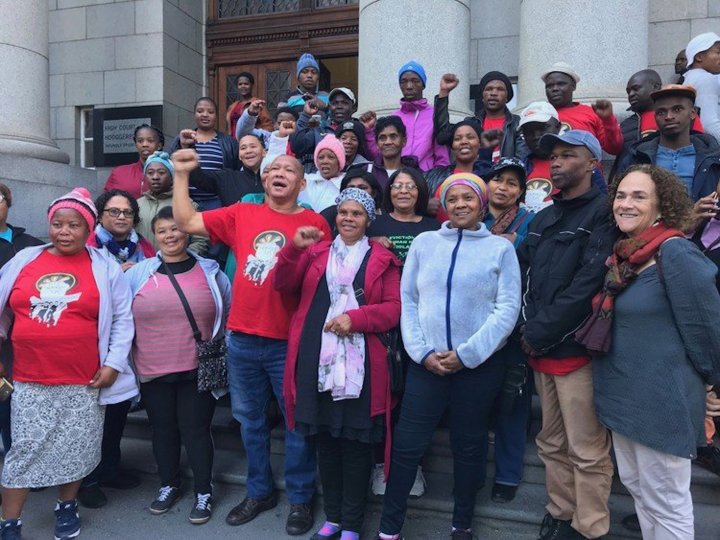GROUNDUP
Interdict violent strikers, not peaceful protesters, ConCourt rules

The Constitutional Court has delivered an important judgment on interdicts against striking workers. The ruling says an employer cannot interdict striking workers as a group if some of those on strike commit violence.
In 2019, 364 workers belonging to the Commercial Stevedoring Agricultural and Allied Workers Union (CSAAWU) went on a protected strike at Oak Valley Farm in Grabouw, Western Cape. The workers accused the farm of providing employee housing based on racial classifications, and of refusing to recognise its “seasonal workers” as permanent employees.
Before the strike began, the Council for Conciliation, Mediation and Arbitration (CCMA) issued picketing rules. The rules prohibited the workers from intimidating or threatening the farm’s customers, suppliers and non-striking employees. The rules also prohibited the workers from stopping anyone from leaving or entering the farm.
But acts of violence and intimidation did occur.
The lawyers for Oak Valley sent a letter to the union demanding that it give a written undertaking that the workers would comply with the picketing rules.
In their reply, lawyers for the union denied that the workers had breached the picketing rules and denied that they were involved in any violence or intimidation. They said the unrest was caused by the local community and the union did not have control over these activities. The union proposed an urgent meeting to resolve the dispute.
The lawyers for Oak Valley then started urgent proceedings in the Labour Court to interdict the union and 364 striking workers from acting unlawfully or violently during the strike.
History of the Case
In court papers, Oak Valley said that the workers had prevented people from accessing or leaving the farm, caused damage to its property and threatened non-striking employees. Oak Valley could not prove that all the workers had acted unlawfully or violently. Instead, it said that the workers in general had associated with unlawful behaviour by others.
The Labour Court granted the temporary interdict.
Many workers returned to duty, but 194 continued to strike. Oak Valley then went back to the Labour Court for a final interdict against the union and the remaining strikers.
The union argued that such an interdict was too broad because it interfered with the rights of workers who picketed peacefully, and that Oak Valley had failed to show that the violence was committed by the workers and not the local community.
The Labour Court rejected the union’s arguments. It granted a final interdict against the 194 workers and the union.
The union appealed, but the Labour Appeal Court upheld the ruling and said it was not necessary for Oak Valley to show that every worker was involved in unlawful behaviour during the strike. It was enough to show some workers had behaved unlawfully and the other workers associated with them.
The union then went to the Constitutional Court. Oak Valley did not oppose the Constitutional Court appeal.
Constitutional Court appeal
Justice Leona Theron, for an unanimous Constitutional Court, said the Labour Appeal Court had failed to consider whether “the indiscriminate granting of interdicts prejudices innocent parties, and potentially, has a chilling effect on the exercise of their constitutional right to strike”.
Justice Theron said an interdict can only be granted against someone when it can be shown that there is a reasonable possibility they will threaten or harm the rights of another person.
To allow an interdict without proving that specific people in the group acted unlawfully could affect the rights of innocent people. This is because people who strike or protest lawfully would be hesitant to do so because they could be interdicted (and charged with contempt of court) because of unlawful or violent actions committed by other people. An interdict in this situation would have a “chilling effect” on the exercise of the constitutional rights to strike and protest.
“… where a protest or strike is substantially peaceful, but there are isolated and sporadic instances of unlawful conduct, only those protesters who associate with those acts of unlawfulness can permissibly be placed under interdict”, the court said.
The Constitutional Court upheld the appeal and set aside the interdict against 193 workers. The interdict against one worker, Nikelo Magaba, and the union was not set aside because there was sufficient evidence to show that they had acted unlawfully.
The union was ordered to pay its own costs for the proceedings in the Constitutional Court. DM
First published by GroundUp.
[hearken id=”daily-maverick/9226″]



















 Become an Insider
Become an Insider
Comments - Please login in order to comment.